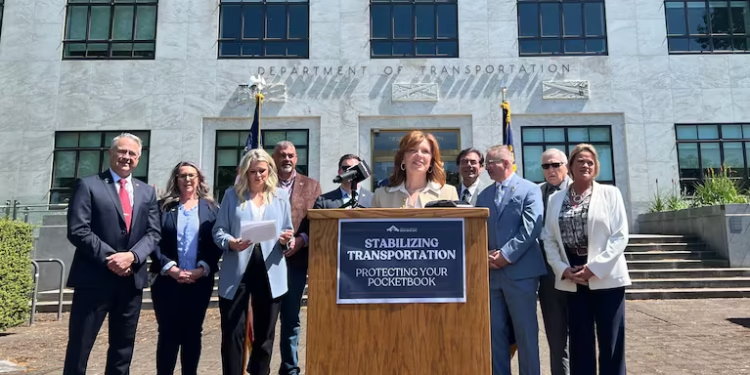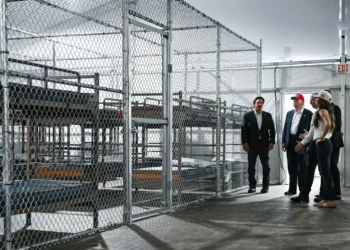The Rise of Placeholder Bills in Oregon Legislature: Transparency Concerns and Public Impact
Oregon’s legislative process has seen a dramatic shift in recent years with the surge of “placeholder bills” – a legislative tool that’s raising significant questions about transparency and public participation. These seemingly innocuous bills, often calling for simple studies, can transform overnight into complex legislation with far-reaching consequences. As placeholder bills have exploded from fewer than 40 in 2015 to more than 600 in 2025, understanding their role and impact has become essential for any Oregonian who cares about how laws are made.
What Are Placeholder Bills and Why Do They Matter?

Placeholder bills serve as legislative reservations – allowing lawmakers to secure a spot in the legislative process before they’ve finalized the details of their proposal. These bills typically contain minimal language, often directing a state agency to “study” a particular issue with no intention of actually conducting such a study.
As Dick Hughes of Oregon Capital Insider notes, “Such bills often call for a study. For example, Senate Bill 8 is an 80-word mandate that the Oregon Health Authority ‘shall study behavioral health’ and report back to the Legislature by Sept. 15, 2026. Another study? Yeah, right.”
Anatomy of a Placeholder Bill
The key component of any placeholder bill is its “relating-to clause” – a brief string of words that dictates what area of law the bill might influence. This clause determines what kind of legislation can eventually replace the placeholder text.
“Placeholders are a way for lawmakers to reserve their place in line — ordering legislative attorneys to draft a dummy proposal that might or might not be completely swapped out for another idea later.”
For example, a bill with a clause “relating to transportation” might start as a proposal to study speed bumps but could later be transformed into legislation about auto crash data sharing. The broader the relating-to clause, the more flexibility lawmakers have to insert different policies.
The Transparency Problem: When Bills Transform Overnight

The most concerning aspect of placeholder bills emerges when they transform without adequate public notice. In April 2025, the Senate Judiciary Committee considered Senate Bill 469, which initially ordered the state’s parole board to study parole law. However, during the hearing, it became clear that an entirely different proposal was being considered – one that would change how convicted murderers are paroled.
The public wasn’t given any opportunity to see the actual proposal until the day after the hearing – their only chance to testify in person. Interest groups who had opposed similar ideas in the past had to scramble to mount a defense.
Key Example: When House lawmakers took up what appeared to be a study on state liquor laws, they were actually considering changes to liquor store regulations. Once again, the public had no insight into the actual proposal before the hearing.
Amanda Dalton, a lobbyist for the Oregon District Attorneys Association, highlighted this problem in correspondence about SB 469: “There has been no stakeholder conversation on this bill in the 2025 Session. This also means no meaningful input or testimony from victims groups were taken.”
The Explosive Growth of Placeholder Bills

According to analysis by the Office of Legislative Counsel, placeholder bills have increased dramatically over the past decade:
- 2015: Fewer than 40 placeholder bills (about 1% of all bills)
- 2025: More than 600 placeholder bills (nearly 20% of all bills)
“It’s really been ramping up,” said Dexter Johnson, the Legislature’s top attorney. This surge has practical implications for the legislative process, as committees become overwhelmed with bills to consider.
Some lawmakers have embraced the practice enthusiastically. Sen. Floyd Prozanski, D-Eugene, chair of the Senate Judiciary Committee, filed more than 70 placeholder bills this session with relating-to clauses ranging from “attorneys” to “youth” and dozens of topics in between.

“There are things that come up that we need to address,” Prozanski told OPB, explaining his frequent use of placeholders. However, he also acknowledged the process might have gotten out of hand: “This time was much more than I anticipated.”
Divided Opinions: Support and Opposition
Arguments For Placeholder Bills
- Allows lawmakers to respond to emerging issues
- Provides flexibility when legislative deadlines approach
- Helps accommodate constituent concerns that arise mid-session
- Prevents half-baked ideas from causing unnecessary alarm
Arguments Against Placeholder Bills
- Undermines transparency in the legislative process
- Can exclude public participation in important policy decisions
- Creates monitoring challenges for citizens and interest groups
- May lead to rushed consideration of complex policies
Rep. Rob Nosse, D-Portland, defends the practice: “They’re supposed to just be there as an outlet in case we didn’t think of this thing or this really bad thing happened. That really does serve a purpose.”

However, Senate Minority Leader Daniel Bonham, R-The Dalles, strongly disagrees: “Oh God, I hate ’em. It’s like I have to watch this Senate bill forever because the relating-to clause is something that could destroy our economy, could end private rights, whatever it might be.”
His counterpart in the House, Minority Leader Christine Drazan, R-Canby, calls placeholder bills “the ultimate exercise of absolute power” by Democrats, adding, “You see these huge omnibus bills at the last minute, you’re always surprised by what’s in them, there’s no process.”
The Legislative Iceberg: What’s Happening Below the Surface

Rep. Paul Evans, D-Monmouth, aptly described the legislative process using an iceberg analogy: “As with icebergs, the visible activity is just the tip — most of the real work happens below the surface.”
This hidden process is particularly relevant when discussing placeholder bills, where the public often sees only the initial study bill, not the substantial policy being developed behind the scenes.
“We’re in the heart of session, where we debate, advocate priorities and try to build consensus. Every issue has its advocacy ecosystem — coalitions, nonprofits and individuals pushing for their causes.”
Evans further explains that governance offers “few easy wins, and even the best ideas can stall when politics, pride or miscommunication get in the way.” This complexity is magnified when placeholder bills enter the equation, as they add another layer of opacity to an already challenging process.
Real-World Impact: When Placeholder Bills Affect Public Policy

The impact of placeholder bills extends beyond procedural concerns. When significant policy changes are introduced through this mechanism, real people and communities are affected.
Derek LeBlanc, a Eugene firearms instructor who has advocated on gun issues in Salem for years, expressed frustration with the process: “They do it to keep us off balance, to keep us in the dark. That’s where it’s affecting our Oregon politics.”
In March 2025, gun rights advocates were incensed when House Democrats waited until less than 24 hours before a hearing to unveil a 22-page proposal requiring gun dealers to obtain a new state license. LeBlanc told lawmakers, “I kind of take offense to the way everything happened. We got the verbiage of the actual amendment last night at about 5 p.m., and so it didn’t give us a lot of time to prepare.”
How can citizens track placeholder bills?
Citizens can monitor the Oregon Legislative Information System (OLIS) website for bill updates, but identifying potential placeholder bills requires looking for short bills that direct agencies to conduct studies. Pay special attention to bills with broad “relating-to” clauses, as these have the most potential for significant changes.
When are placeholder bills most likely to transform?
Placeholder bills typically transform near legislative deadlines when lawmakers are rushing to advance their priorities. Pay particular attention to bills that suddenly receive amendments just before committee work sessions or as the session nears its constitutional end date.
Potential Reforms: Limiting Bills and Increasing Transparency

Following reporting on the surge in placeholder bills, some legislative leaders have acknowledged the need for change. Senate President Rob Wagner, D-Lake Oswego, stated: “There’s improvements that need to happen in terms of the number of placeholder bills and how they’re being utilized. So I’m open to that conversation.”
A bill introduced by House Speaker Julie Fahey, D-Eugene, would limit the state’s 90 lawmakers to filing 25 bills apiece during the six-month odd-year sessions. This would almost certainly curb the use of placeholders.
“The current pace and volume of legislation is not sustainable,” Sen. Janeen Sollman, D-Hillsboro, said in a press release. “When committees are overloaded, public testimony can be rushed, and meaningful public engagement suffers. We need to be more deliberate about what comes to the table.”

Kate Titus, executive director of the good government group Common Cause Oregon, emphasized the need for reform: “Legislators shouldn’t be allowed to quietly ‘gut and stuff’ bills, evading full public scrutiny. The onus is on the Legislature to be fully transparent.”
By the Numbers: The 2025 Legislative Session
| Statistic | Number | Percentage |
| Total Measures Introduced | 3,432 | 100% |
| Bills Introduced | 3,277 | 95.5% |
| Placeholder Bills | 615+ | 18.8% |
| Bills Passed by House | 238 | 7.3% |
| Bills Passed by Senate | 196 | 6.0% |
With 51 days remaining in the 2025 legislative session as of early May, much work remains to be done. The Legislature must pass a two-year budget while also addressing numerous policy priorities across committees like Rules, Revenue, and Ways and Means.

Under the Oregon Constitution, the Legislature must adjourn no later than its 160th day, which is Sunday, June 29, 2025. As this deadline approaches, the pressure to move legislation increases – creating conditions where placeholder bills are more likely to be transformed into substantive policy with limited public input.
Conclusion: Balancing Flexibility and Transparency

Placeholder bills represent a legislative tool that serves a practical purpose but comes with significant transparency concerns. As their use has exploded in recent years, the balance between legislative flexibility and public participation has tilted toward opacity.
The coming weeks of the 2025 legislative session will reveal whether lawmakers are serious about reforming this practice or if placeholder bills will continue to proliferate. As Rep. Evans noted, much of the real work happens below the surface – but in a democratic system, citizens deserve to see as much of the iceberg as possible.
For Oregonians concerned about government transparency, understanding placeholder bills is an essential part of civic engagement. By recognizing how these legislative vehicles operate, citizens can better advocate for their interests and hold their representatives accountable for the laws they create.





















































